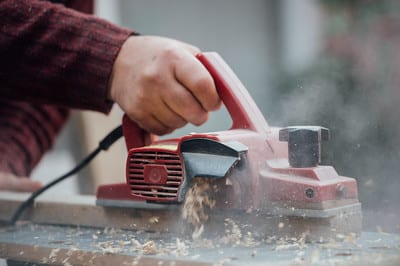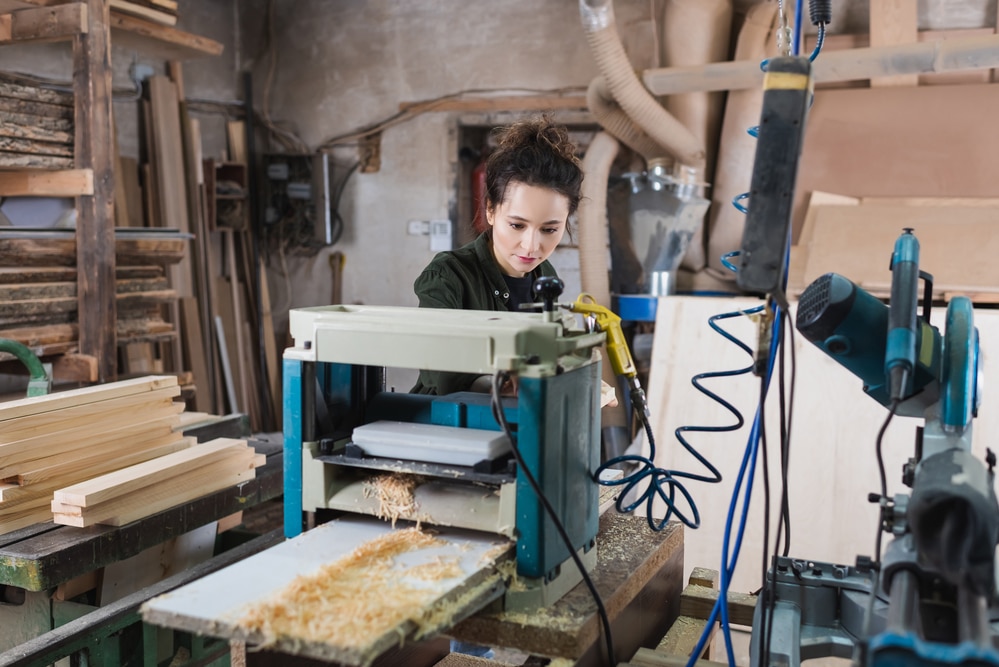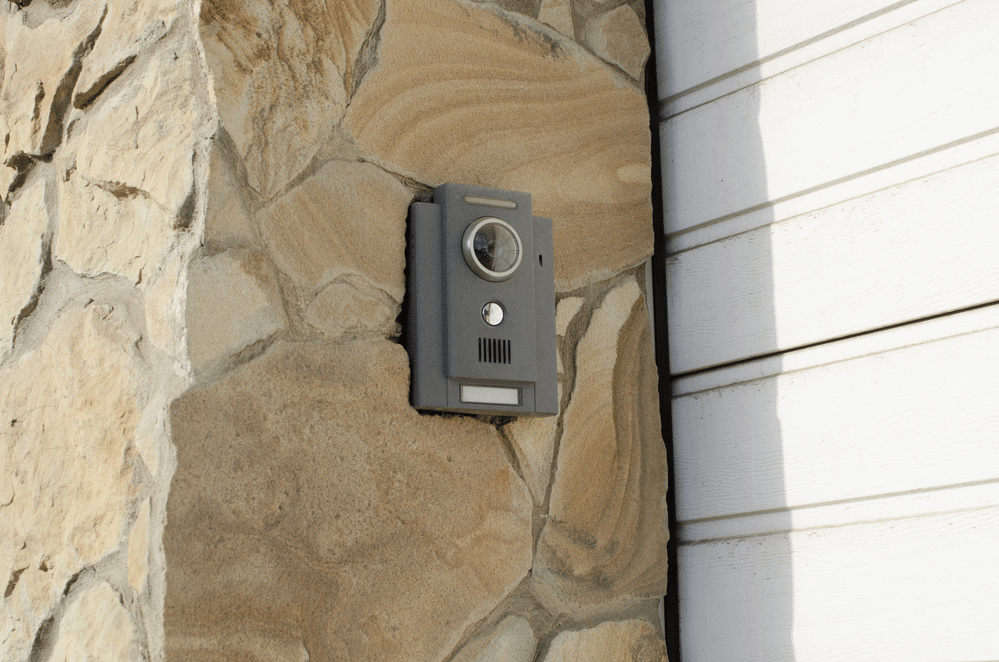Last Updated on
What is a planer thicknesser, and why is it such a valuable tool for carpentry and woodwork? If you’ve ever been involved in creating shelves, furniture, and similar products from scratch, then you’re probably familiar with terms like “planer” and “thicknesser”.
Planers and thicknessers are instruments used to trim pieces of material from a board, usually in the carpentry landscape. They are similar to “jointers”, which also help to plane wood and create shavings. Here’s what you need to know about planer thicknessers and how they work.
What Is a Wood Planer Thicknesser?
A planer thicknesser or thickness planer is a woodworking machine used to make a second surface parallel to an initial surface. While the device can’t create a guaranteed flat surface on either side of your board, it essentially copies the surface of the other side of the machine. If your existing wood piece is flat, the planer will mimic the flat surface when working on your second board.
It is also a “table tool” — a floor-mounted, non-portable equipment featuring a unique mechanism mounted on a flat table or working surface. The planer thicknesser has four key components: a height-adjustable table, a set of in-feed rollers, outfeed rollers, and a cutting head with planer blades perpendicular to the table.
Thicknesser vs Planer: What’s the Difference?
Planers and thicknessers are both similar woodworking tools used to trim boards or pieces of thin material. The main difference is that standard planers are usually handheld, portable power tools. You can take your device to the wooden boards you want to cut for construction projects.
Most planers are typically intended for trimming the ends or sides of a wooden board by a few millimetres, according to your desired depth. On the other hand, a planer thicknesser is a static machine that stays in one location. You’ll need to take your material to the machine for cutting.
A regular planer thicknesser is used to cut the surface of a wooden board to a consistent level of thickness in a single pass. These tools are generally capable of wider cuts than the average planer.
What Does a Planer Do?

A planer and a planer thicknesser can both be used to adjust the shape and size of a wooden board. A planer thicknesser works by automatically feeding a board across a table and shaving a small amount of material from the surface to get it to the exact size of another board.
Alternatively, a planer performs similar functions but often with handheld machines. The standard planer will generally adjust the width and height of a board rather than the thickness of the surface. Both planers and planer thicknessers may also be referred to as “jointers”.
However, jointers and planers can be separate machines. Jointer devices also adjust the width or depth of a board and ensure the surface of your material is as smooth as possible.
In some cases, it’s possible to purchase a portable planer thicknesser, which can give users more options when it comes to adjusting the sizing of different materials. Portable thicknessers typically still use tables and flat surfaces to help feed the wood or anything else into the system.
However, a portable thicknesser can be attached to multiple surfaces and may be more lightweight and transport-friendly than traditional thicknessers.
How Do Planer Thicknessers Work?
Thicknesser planers feature a wide cutting head with many different longitudinal cutting knives. The planer blades in a thickness machine are positioned perpendicular to a completely flat working surface, which may be height-adjustable for various requirements.
When using a planer thicknesser, two sets of rollers allow you to automatically feed the board across the table under the cutting device. As the board passes beneath the planer blades, a specific amount of material is removed. The perpendicular orientation of the cutter and flat table surface helps to keep the material as even as possible during cutting.
A planer thicknesser works best when one side of the board is flat and uniform to begin with. In most cases, a flat surface will allow the machine to complete the cutting task within a single pass while maintaining a consistent thickness. If a board is already warped or bent, it must be passed through a power plane or jointer to solve this issue. The pressure of the cutting head will otherwise push the board flat through the pass before it retains its curvature after exiting the machine.
What are Planer Thicknesser Machines Used For?
Many carpentry professionals and woodworkers require machines capable of cutting large boards of wood and other materials to specific depths. They must also ensure they produce an equal thickness level across the board.
A planer thicknesser is designed for this purpose. Professionals may need one for the following projects:
Smoothing
Planers and planer thicknessers can be used to remove thin layers from a wooden board to take care of any impurities, enhancing the finish of a project.
Levelling
Most planer thicknessers will follow the shape of the wood to a certain extent, but you can also utilise them to straighten out unnecessary kinks in the material. Planers are fantastic for levelling the sides and ends of wooden boards. Typically, however, they’re not used to level large surfaces on wooden boards, as the width of the cutting head restricts them.
Today was a day for making progress on our new chair-makers workbench project!
— David Stephenson (@DCHStephenson) September 27, 2022
My City and Guilds student gained experience working with the planer-thicknesser, hand plane & biscuit jointer to prepare the pine leg laminations and beech bench top laminations 🪚🔨 #workbenchbuild pic.twitter.com/M4FtumbG4C
Chamfering
Chamfering projects involve making a 45-degree incision onto the edge of a wooden board to eliminate a 90-degree angle. This can sometimes be done for safety reasons or to create a more aesthetically appealing edge.
What Do People Look for When Buying Thicknesser Machines?
Answering the question “what is a planer thicknesser” is often crucial for many woodworkers. These machines can be an important purchase for many professionals working with timber. However, to produce the right results, you need to carefully consider the planing width of your thicknesser, the planing depth, and the machine’s wattage.
Sometimes, it’s essential to think about how you will use the planer. In environments with limited access to electrical outlets, professionals may need to opt for a handheld or a portable planer instead of a complete thicknesser planer system.
Rebekah is a writer who loves to explore new products and find hacks that make life easier. She has a knack for all things home improvement, health and fitness. So you’ll often find her on Pinterest or browsing Houzz for ideas.
She’s always looking for the next thing to fix up around the house or what gadget might be just right for her lifestyle. Rebekah enjoys exploring new recipes, taking care of her family, and making sure she stays healthy with regular workouts at the gym.



